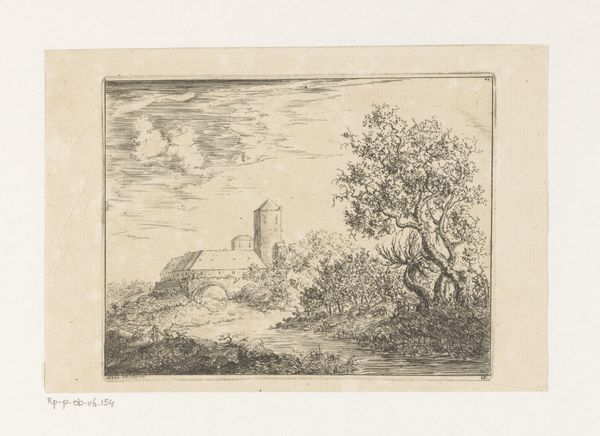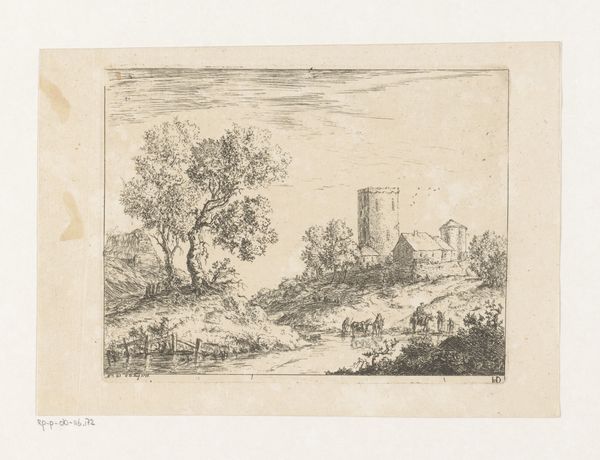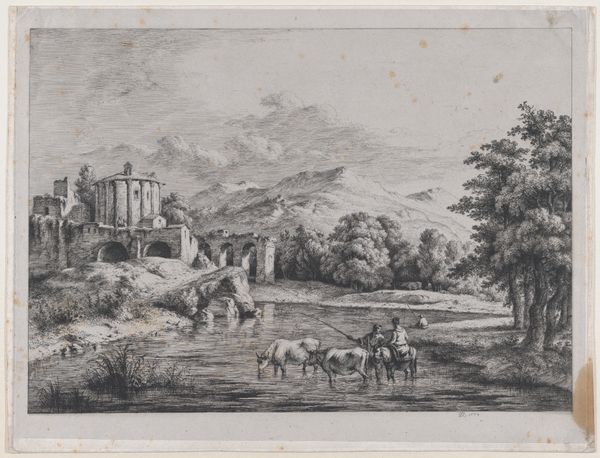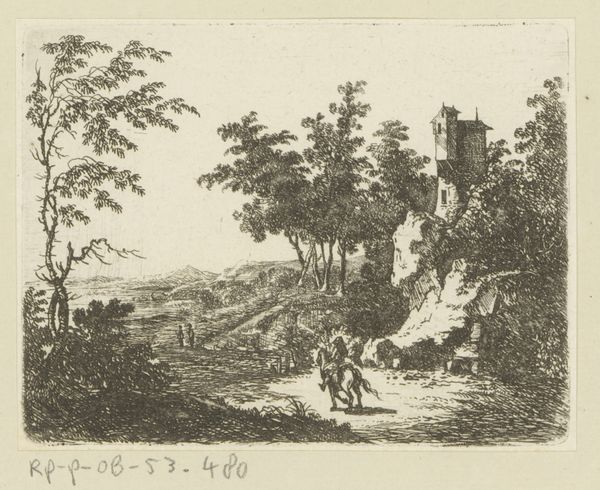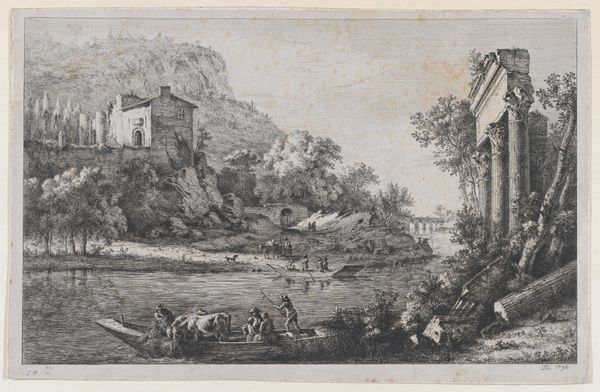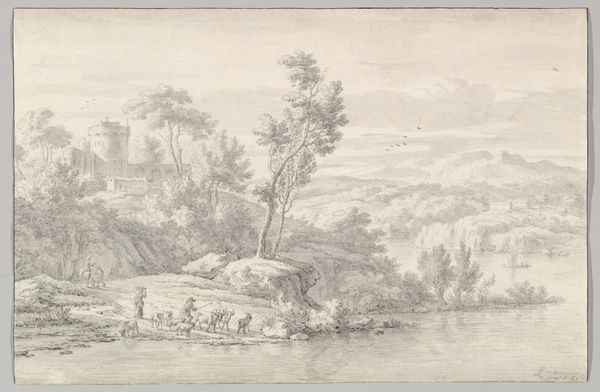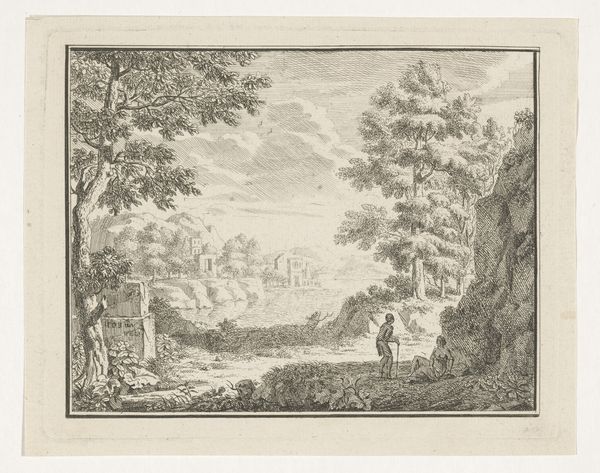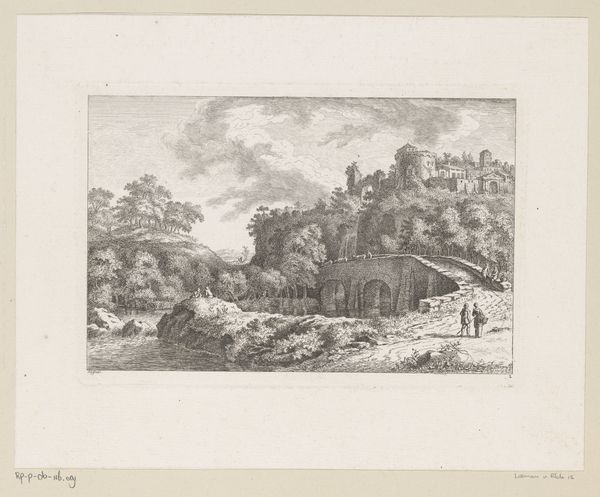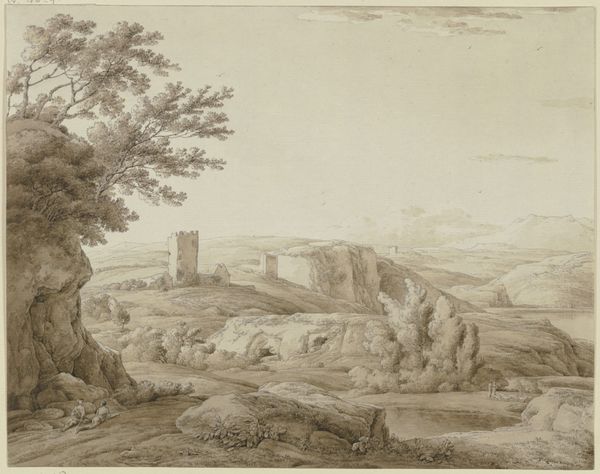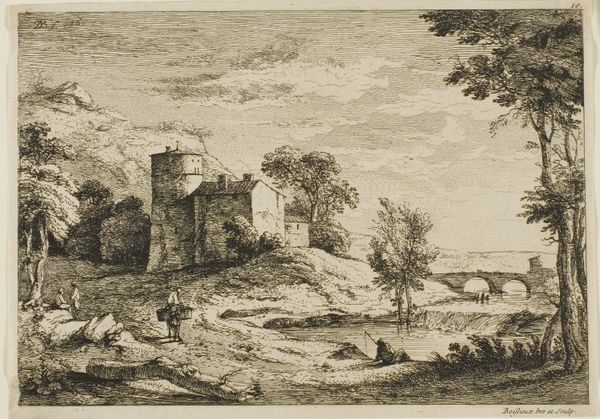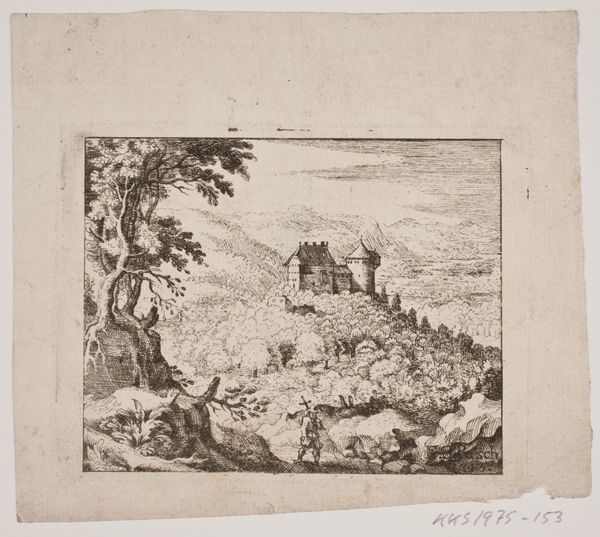
drawing, print, etching
#
drawing
#
baroque
# print
#
etching
#
landscape
#
pencil drawing
Dimensions: height 115 mm, width 174 mm
Copyright: Rijks Museum: Open Domain
Curator: This is *Landscape with Ruins*, an etching made in the 17th century, now residing at the Rijksmuseum. Editor: It's melancholic, wouldn't you say? The landscape is almost swallowed by a pervasive gray, punctuated by this skeletal ruin in the background. Curator: Absolutely. The etching, done by J. Roemer, is a classic example of Baroque interest in landscape and a romanticized view of history. Ruins were popular motifs. We see that artists of the time were captivated by what they saw as the passage of empires and decay of worldly achievements. Editor: The ruin does indeed dominate. What’s striking is its position perched high, almost daringly so. It gives an immediate feeling of temporality but it’s the smaller details that capture the viewers imagination: the two figures on the road... Curator: Yes, I believe these details are a signifier of society, implying human life is impermanent and fragile against the backdrop of relentless time. There’s this interplay between nature reclaiming structures versus humans continuing in the everyday. Editor: Look how the nature on the left almost seems to be advancing forward, almost aggressive as opposed to the ruined castle being further and further isolated with decay and destruction. I also feel there is hope. While death, decay, ruin is a primary symbolic narrative, at the bottom the naturalistic and botanical illustration bring a renewal. Life moves forward. Curator: That brings up an important consideration of how societal events have shaped artists and their audience. The Thirty Years’ War concluded mid-17th century. In those years there was massive destruction across Europe and a sense of societal trauma became engrained with what Europeans knew as normal, affecting people's subconscious desires. Editor: And the landscape, then, takes on another meaning, not just the fall of past powers, but as a constant reminder of the frailty and impermanence of the present, wouldn't you agree? A humbling lesson rendered with exquisite detail. Curator: Precisely. Looking at Roemer's choices from a historical and institutional perspective certainly enriches the picture beyond a pretty landscape. Editor: And conversely, understanding the emotional and symbolic language used at the time grants deeper empathy for our ancestors.
Comments
No comments
Be the first to comment and join the conversation on the ultimate creative platform.
